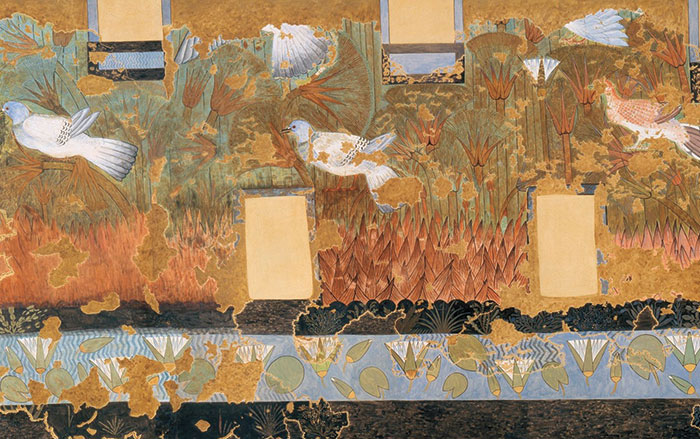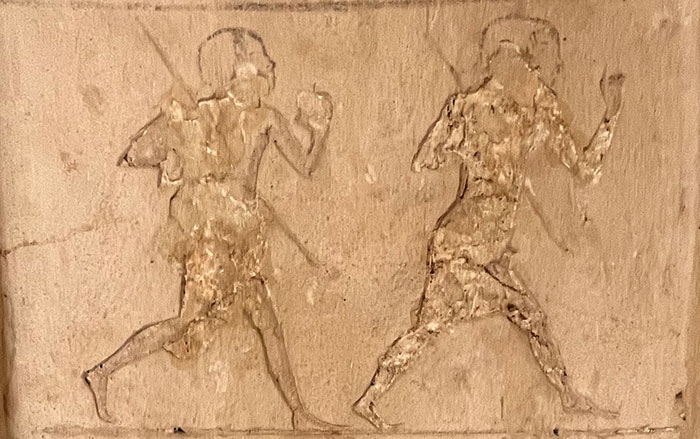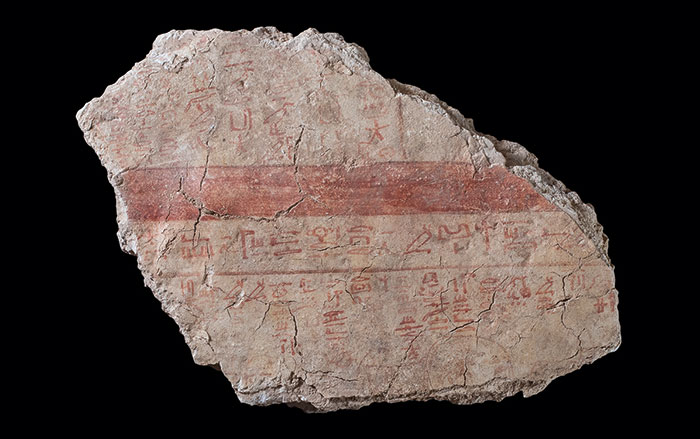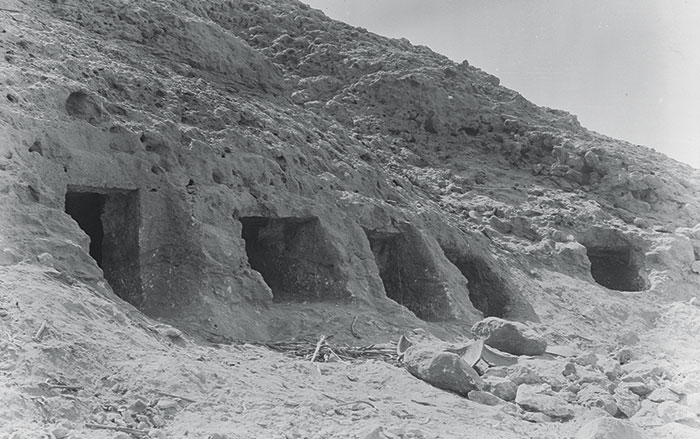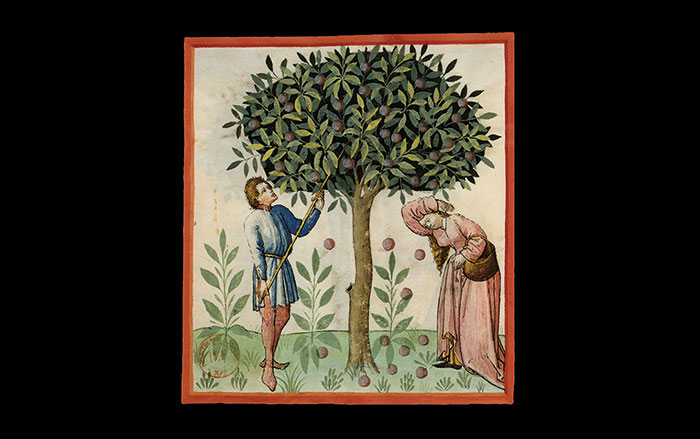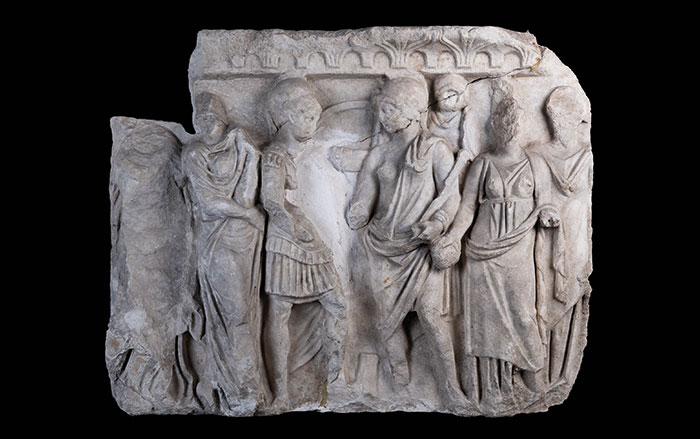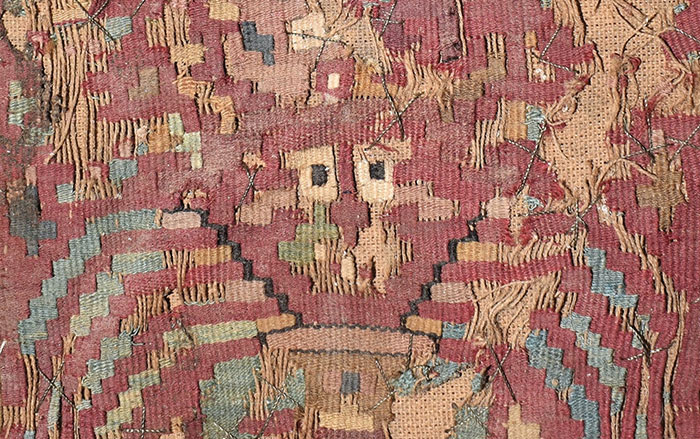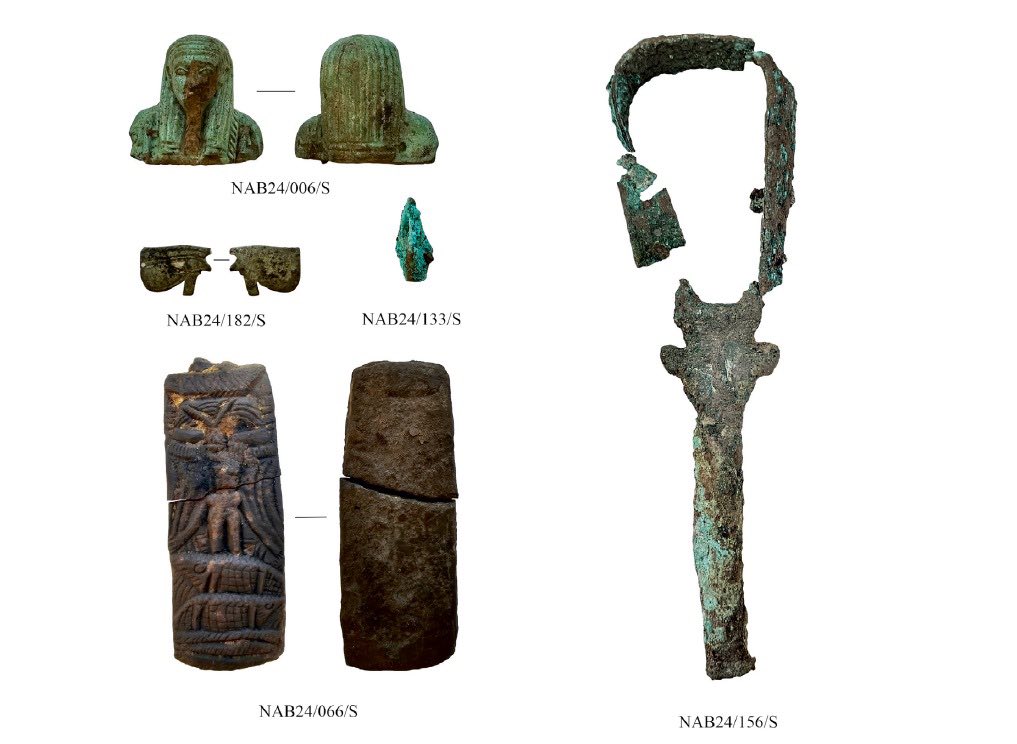
TELL AL-FARAUN, EGYPT—According to a Colombia One report, Egypt’s Ministry of Tourism and Antiquities announced that British archaeologists from the University of Manchester made a slew of new discoveries in the Nile’s eastern Delta. The team is working at the lost ancient city of Imet, which lies beneath the site of Tell al-Faraun, also known as Tell Nebesha, northeast of Cairo. Imet was an important residential center and a hub of trade and agriculture at the crossroads of key commercial routes. Excavations revealed tower-shaped, multilevel houses dating to the fourth century b.c. that were designed to accommodate large families or groups of workers. Archaeologists also uncovered parts of a temple dedicated to the cobra goddess Wadjet. Among the remarkable artifacts recovered were green faience ushabti figurines, a stone stela depicting the god Horus flanked by two crocodiles, and a bronze sistrum—a musical instrument associated with the goddess Hathor that was used during sacred rituals. To read about Egyptians' method for measuring the Nile's annual flood, go to "The Ancient Promise of Water: The Limits of the Nile."



